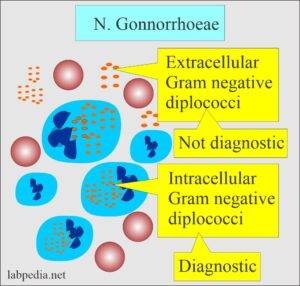Gonorrhea Culture
Gonorrhea is a sexually transmitted infection caused by the bacterium N. gonorrhea. These bacteria often grow in moist areas of the reproductive and urinary systems. But they can also grow in the eyes, mouth, throat, or anus.
You may also have this test if your healthcare provider suspects you have gonorrhea based on the following symptoms:
- Females may experience vaginal discharge, a Burning sensation when urinating, Bleeding between periods, and Pelvic pain
- Men may have discharge from the penis, pain when urinating, and Painful or swollen testicles
- Anal itching, soreness and bleeding, and painful bowel movements are symptoms of anal gonorrhea.

This test uses samples from the cervix, urethra, penis, rectum, or throat. Lab technicians then culture or grow the sample by putting it in a container. If the bacteria that cause gonorrhea grows in your sample, you will likely have gonorrhea.
Although the culture technique is widely used, it doesn’t have high sensitivity. Another test called gonorrhea nucleic acid amplification (NAAT) is done more often to confirm the diagnosis.
Numerous problems affect the culture of Neisseria gonorrhoeae. A screening culture for gonorrhea detects only 65-85% of infected women. The yield of those cultures is improved by careful sampling and using a second specimen. Several selective media enhance the growth and isolation of Neisseria, but those media inhibit 3% of the strains. Sixteen percent fewer infections are detected when long-term transport of gonorrhea culture specimens is used instead of on-site bacteriologic testing. (1)
Gonorrhea is a sexually transmitted disease. Thus, it can be prevented by adopting hygienic measures regarding sexual contact. If the culture is tested positive, it is easily cured using antibiotics.
Figure 1: N.gonorrhea diagnosis in lab culture (2)
References:
- Schink, J. C., & Keith, L. G. (1985). Problems in the culture diagnosis of gonorrhea. The Journal of reproductive medicine, 30(3 Suppl), 244–249.
- Figure from https://labpedia.net/gonorrhea-diagnosis-of-neisseria-gonorrhoeae/

